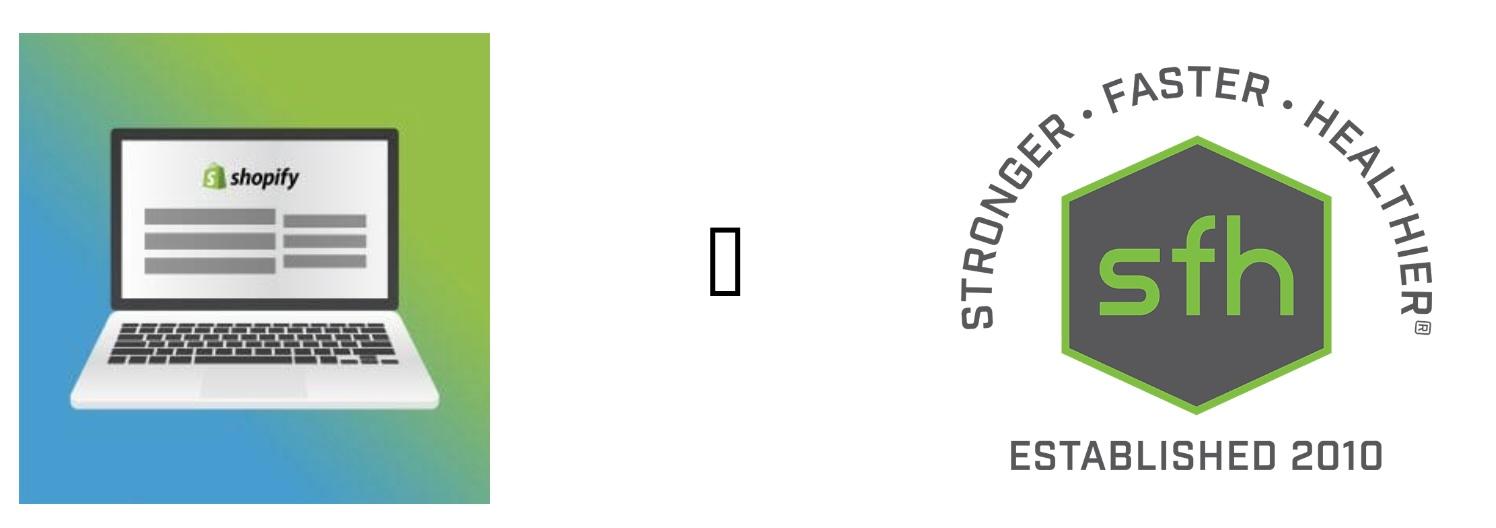Magento 1 to Shopify Plus Migration


Here, we’ll look at a successful ecommerce migration. Specifically, a Magento to Shopify migration. For this project, maintaining the existing backend accounting technology was a high priority, but overall, it was a project centered around data migration and unique Shopify app integrations that added value.
Our client, Stronger Faster Healthier (SFH), is a company that focuses on providing healthy supplement options that help people maintain active lifestyles. For SFH, this case began when their Magento 1 platform, which they had built their store on, was discontinued.

When Adobe, the owners of Magento, stopped support for Magento 1 in 2020, it left SFH with a new task. SFH started looking into the next generation of Magento (Magento 2.x) and other ecommerce platforms.
After reviewing internal business-structures, SFH decided on the Shopify platform. And, as their dedicated ecommerce development agency, our team started planning and collecting SFH’s input for their new Shopify website.
ERP Migration
Figuring out the best option for an API connector was the biggest challenge for the Magento to Shopify migration. API technology works as a gateway for primary tools and software like Shopify to connect with other software. Think of this like a doorway where data passes back and forth.This was important to maintaining their ERP integrations after the migration.
An ERP is the efficient connection between business processes. In SFH’s case, this included maintaining Microsoft Great Plains accounting software to keep the automation of future purchase data fully synched. This ERP connection allows automatic updates of purchase orders and revenue, which makes sales and accounting management easier for SFH.
The biggest hurdle for this process – researching to find an existing software to complete their ERP migration over to Shopify. If we wouldn’t have found “E-Bridge Connections” software to maintain their integration, the only other option would be custom-built software.
Without a software that could integrate with Shopify and Microsoft Dynamics Great Plains ERP, they would’ve had to consider building what they need from scratch. Although building the perfect custom software for SFH is within our expertise, it was not a cost-efficient solution for the client.
So, we were happy to find a licensed software that we could incorporate and save SFH thousands. There will always be trade offs with 3rd party software, but we felt confident that the software would not only get the job done, but also save SFH time and money.
Once we found the right software, we turned to the data migration. This is a big deal for ecommerce sites. Transferring data – customer data, product data, account data – has to remain constant from beginning to end.
While it’s possible to better define data for proper organization, in an ecommerce migration it’s important that we transfer any related data without losses. This allows our developers to tie back together previous historical data inside the new platform. Owners and customers appreciate this when tracing back their transaction history on the new platform. Especially for accounting purposes.
Adding and Migrating eCommerce Tools to Shopify
Eccomerce migrations usually involve other tweaks and upgrades. Sometimes, these come at the request of owners and other times from our development experience over the years. This was the case when SFH asked to look into their shipping process, menu design, existing blog and a successful migration of their MailChimp data for email marketing purposes.
We reconfigured their shipping workflow using ShipStation. Leveraging the Shopify software, our Shopify developers automated a handful of shipping tasks. Through this automation, SFH was able to eliminate manual labor involved with exporting orders to track sales and shipping, which enabled their staff to do more with less work.
The next item that saw improvement was their menu design. Implementing what’s called a mega menu, users can easily see all the options available under one icon just by hovering over a phrase. This design eliminates toggling back and forth between different screens when searching for products or information.
Furthermore, Shopify offers a better blogging experience for staff to use and manage. With more flexibility it cuts down on the time for producing, marketing, and editing blog content. The phrase “ease-of-use” can become overused at times, but in this case, it holds accuracy.
We completed the Shopify migration with the import of the MailChimp application and its related data. The email marketing tool has blog access to incorporate live content with email marketing campaigns that drive traffic and sales.
This is another upgrade that improves the process and how their team works. Finishing a task faster is always great! With better organization to their data, things are easier to find and complete in the future.
Successful Ecommerce Migration
With their Magento to Shopify migration, SFH is in a better position to make use of its existing data. Maintaining their ERP integrations intact was a huge win. Plus, with upgrades to design, shipping, and web tools, growing their brand is a lot easier to accomplish. Sometimes technology can be the culprit of stagnant growth, but with their web migration complete, technology is now an asset, not a problem.
